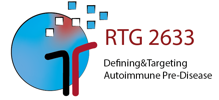MD A2: Anatomical expression of target antigens in autoimmune blistering dermatoses as markers for lesion formation
Autoimmune bullous dermatoses (AIBD) mainly consist of two groups. While pemphigoid diseases are characterized by autoantibodies against structural proteins of the dermalepidermal junction, pemphigus diseases are characterized by autoantibodies against the desmosomal adhesion proteins, desmoglein (Dsg) 1 and Dsg3 in the epidermis and surface-close epithelia. It is well-known that certain anatomical body regions are particularly prone to harbor lesions in specific AIBD. Blister formation in bullous pemphigoid e.g., occurs mostly on the flexural parts of the limbs, on the abdomen, and in the mucosal areas. Pemphigus diseases mostly affect mucosal areas and upper back part of the body. Yet, it has not been systematically analyzed whether these specific body regions are affected due to increased mechanical stress or high expression of the corresponding target antigens at these sites. In the present proposal, the expression of different AIBD target antigens at different body sites will be studied on the mRNA and protein levels using RT-qPCR and immunofluorescence staining in post-mortem biopsies. Result of this study will help to better understand the predilection sites of different AIBD.

- Projects
- 1st Generation
- A: Defining Autoimmune Pre-Disease
- B: Targeting of Autoimmune Pre-Disease
- Associated projects
- Medical doctoral researcher projects
- Concluded projects
- Doctoral researchers
- Medical doctoral researchers
- MD A1: Investigation of the influence of specific CDK inhibitors on neutrophil activation
- MD A2: Anatomical expression of target antigens in autoimmune blistering dermatoses as markers for lesion formation
- MD A3: Structural characterization of skin-directed autoantibodies and their interaction with the antigen to gain insights into autoimmune pre-disease
- MD A4: Do interactions between AT1R autoantibodies derived from patients with systemic sclerosis and endothelial cells lead to endothelial dysfunction?
- MD A5: Establishing a human 3D skin model for pemphigus vulgaris
- MD A6: Assessing vasculopathy in systemic sclerosis using optical coherence tomography
- MD A7: Identification of autoantibodies contributing to the break of immunotolerance in immunization induced mucous membrane pemphigus mouse model
- MD A8: Impact of angiotensin II type 1 receptor antibodies on endothelial dysfunction in systemic sclerosis
- MD A9: Impact of glycosylation on IgG4-induced signaling in neutrophils
- MD A10: Testing a new single chain variable fragment for pemphigus foliaceus in the human skin organ culture model
- MD A11: Impact of glycosylation on IgG3-induced signaling in neutrophiles
- MD A12: Screening for inhibitors to prevent keratinocyte dissociation
- MD A13: Investigation of the local and systemic complement activation in bullous pemphigoid patients
- MD A14: Impact of different IgG subclasses and glycosylation patterns on immune complex-induced signaling in neutrophils
- MD A15: Novel target antigens of the lower basal membrane zone as inducers of autoimmunity of bullous autoimmune dermatoses
- MD A16: Identification of the major epitope of the BP180 ectodomain recognized by serum IgA autoantibodies of patients with pemphigoid diseases – IgA autoantibodies as prognostic marker?
- MD A17: Autoantibody-mediated effects on endothelial and immune cell signaling in systemic sclerosis
- MD A18: Molecular and cellular characterization of pre-autoimmune effects induced by aging in mice
- MD A19: Immunogenic effects of Staphylococcus aureus toxins in autoimmune vasculitis
- MD B1: Testing the effect of kinase inhibitors in the human skin organ culture model for pemphigus vulgaris
- MD B2: Investigation of cigarette smoking-induced autoantibodies against human airway epithelial cells in patients with chronic obstructive lung disease
- MD B3: Contribution of taurine, pyridoxine and pantothenic acid to the pathomechanism of pemphigus vulgaris
- MD B4: The influence of prednisolone treatment on split formation in the human skin organ culture model for pemphigus vulgaris
- MD B5: Molecular characterization of the pre-autoimmune effects of Western diet in healthy mice
- MD B6: Testing established MAP kinase inhibitors in a different approach of the human skin organ culture model for pemphigus vulgaris
- MD B7: Testing the effect of kinase inhibitors in the human skin organ culture model for pemphigus foliaceus
- Ass. doctoral researchers
- Ass. medical doctoral researchers
- 2nd Generation
- 1st Generation






